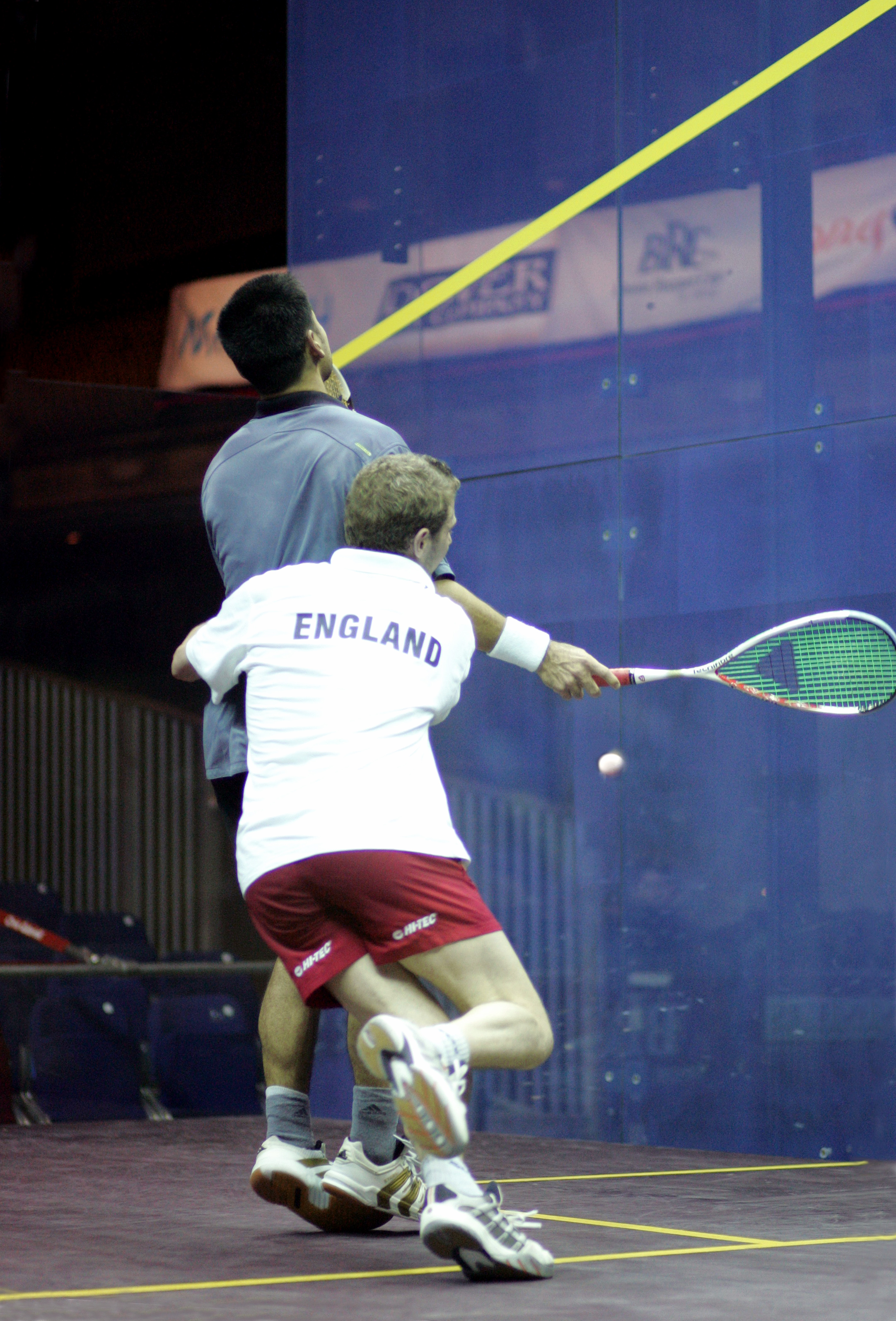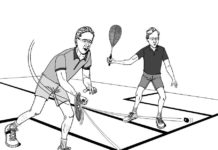By Rod Symington, WSF Referees and Rules Committee
A long, long time ago when dinosaurs ruled the earth and I was in grade school, our English teacher (an incorrigible sadist) used to enjoy setting us an exercise in which we had to describe in plain English some everyday things—such as a tea-pot or a telephone—for the benefit of a Martian on the distant planet. It proved to be an extraordinarily difficult task. Explaining the basic concepts of the game of Squash—such as the difference between a let and a stroke—is a similar challenge. Squash is a very complex game to try to explain in words.
Which is why so many players ask so many questions about the Rules and their interpretation. One recurring aspect of these questions is the confusion over what a player ought to do when encountering interference.

I am actually talking here of two kinds of questions: first, the widespread belief that if the opponent has hit a bad shot, thus giving the player an advantage, that player has the right to stand still and the opponent has to run around the player to play the next shot. This is not true.
No matter how bad your opponent’s previous shot (how do you define “bad” anyway?), as soon as you have hit the ball and completed your follow-through you must make every effort to clear out of your opponent’s way and provide direct, unobstructed access to the ball. Yes, it was a beautiful drop shot, Harry, but you may not stand there and admire it—you have to move out of the way.
Second: As a general rule, daily “friendly” play on squash courts in the USA is far too physical. The game is squash, not football. What far too many players fail to understand is that squash is a non-contact sport. In fact, the Rules explicitly instruct the Referee to penalize players who indulge in physical contact that is “significant” or “deliberate” (Visit SquashMagazine.com, click on Rules of the Game, and you’ll find a link to G6 in Symington’s article online). When there is no Referee, players are expected, of course, to abide by the letter and the spirit of the Rules: Do not physically abuse your opponent.
All too often a player discovers that the opponent, having hit a return, is now in the player’s direct line to the ball—and the player runs full-tilt into the opponent, knocking him off balance (ladies tend to be more gentle). This is not acceptable and it is a serious breach of the Rules.
There are some players, indeed, who enjoy the physical contact. These refugees from the Ultimate Fighting Octagon are a menace to the sport and to the proper way of playing the game. Yes, you have to make every effort to get to and play the ball, but if your opponent is in the way, you must stop short of physical contact.
I can hear the objection now from a thousand voices raised in protest: “But in the heat of the moment I can’t stop my forward progress!” Yes, you can—and yes, you must. It is no different from not hitting the ball if the opponent is in the way of your shot, or of holding your swing if the opponent is still within the swing-arc. It will not do to say: “I couldn’t hold up.” The Rules of Squash demand that players keep safety in mind at all times—and the three fundamental provisions of this concept are: Do not swing if you are likely to hit your opponent; do not hit the ball if your opponent is in the way of your shot; and do not run into your opponent. Stop and call “Let” before the physical contact occurs.
To play squash you have to learn a set of actions that are not always natural. Players have to tread a fine line between making every effort to get to the ball and stopping short of physical contact. Millions of players have successfully done so for decades—and millions do so today. Are you a squash player—or are you training for the UFC?





